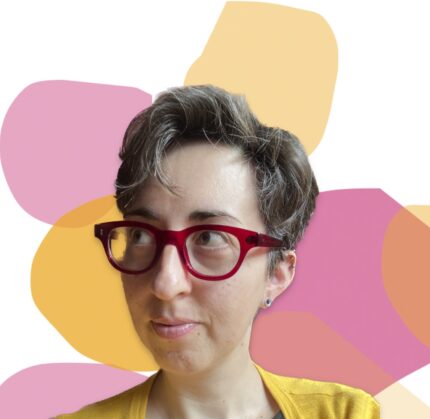The complex rhetoric around neurodivergence, ranging from the politically unhinged to persistent gas lighting, requires us to start by defining autism.
Autism, a form of neurodivergence, is a naturally occurring neurodevelopmental variation that manifests in differences in how people experience and interact with the world.
The focus is often on communication “deficits” and “repetitive and rigid” behaviour but, quite frankly, this focus and these words say more about how non-autistic (allistic) people interpret our behaviour and their own discomfort with the same.
Our own experiences of being autistic are a lot more expansive and encompass autistic joy and strengths, alongside the significant and often unnoticed challenges we experience day-to-day.
At different points in time, we both made the conscious, and somewhat fraught, decision to share our autism diagnoses in professional contexts. For the most part we were hugely relieved to be met with compassion from colleagues and a desire to support us to make the necessary changes to level the playing field.
Yet, in the background of these positive experiences, there is a near-constant battle with systems, processes and neuronormative expectations that undermine individual attempts to be supportive.
We wanted to share the biggest challenges we’ve faced in sharing our diagnoses and attempting to build afresh work practices and environments that will allow us to thrive.
Attempts to normalise
On more than one occasion after sharing our diagnoses, we’ve both been met with responses along the lines of “we’re all a bit like that though”.
While we assume these comments are intended to “normalise” our experiences and perhaps reassure us that we’re not that different, such comments are somewhat missing the point.
Firstly, autistic people are human too, so our autistic traits are very much part of the human condition. For example, the struggles we face in some social contexts may be experienced by allistic people sometimes.
And our desire to seek refuge in routines is something many people can relate to, particularly in times of great upheaval. What sets our experiences apart is the depth, duration and the degree to which these experiences impact our capacity to thrive.
Secondly, late discovery or diagnosis often comes about after a lifetime of deeply felt misunderstandings and a perpetual sense of being somehow wrong. The challenges autistic people face have very real implications such as significant impact on mental wellbeing alongside higher risks of substance abuse, accidents and offending behaviour as well as lower levels of income and education.
Poor employment outcomes and high rates of autistic burnout are often part and parcel of being autistic. Notably, suicide is a leading cause of early death for autistic people.
While finally getting answers to a lifetime’s worth of questions is broadly positive, never underestimate how earth-shattering a late discovery or diagnoses can be. It can completely unmoor you from an identity you worked hard to craft and maintain, often over many decades.
To be set adrift whilst trying to carry on “business as usual” can be incredibly disorienting and well-meaning comments intended to find common ground can feel dismissive and leave us, once again, feeling misunderstood.
To receive a diagnosis can be confirmation (or even a revelation) that you have been leaning on masks and performativity this whole time, borrowing bits of behaviour and social styles from others, in order to keep up with fast-paced workplace dynamics.
But if our identity is a mosaic of other people’s characteristics, who exactly are we? We therefore often find that the diagnosis we hoped would answer our questions, instead serves up a hearty existential crisis. Coupled with the need to continue functioning both in personal and professional contexts, whilst running that background process, can be exhausting.
The adjustments minefield
Often a motivating factor in sharing an autism diagnosis is the need to access workplace adjustments, though it should be noted you don’t need a diagnosis to do so.
What many people won’t realise is that identifying the adjustments you need, and getting these put in place, often feels like a full-time job in and of itself. We’ve both experienced scenarios where we’ve been encouraged to share what we need to work at our best, only to find ourselves somewhat stumped.
We’ve defaulted to so many complex and energy-consuming workarounds to overcome the barriers in our environment, that it can be hard to pick apart common workplace challenges from those which come about from being part of a neurominority.
Plus, autistic people aren’t often comfortable around change, so if we’ve established a workaround, it can be difficult to consider an alternative, despite how much more efficient it could be!
This is the nature of having differences that are somewhat invisible – you don’t realise that everyone isn’t quietly battling the same complexities.
What we have both realised is that it’s essential to have the time and space for ongoing conversations around our evolving understanding of our needs. Too often the default is to use prescriptive forms and processes to put adjustments in place, whereas we have both benefitted from ongoing dialogue with managers who are committed to ensuring the barriers we experience are removed, in as much as possible.
Our hope is that more people will start to understand that a diagnosis or discovery, and the sharing of this new understanding, should form the start of a conversation, rather than an outcome to be compensated for.
Neuronormative expectations
The majority of people will be blissfully unaware of what we mean by neuronormative expectations because, if you’re neurotypical, it’s likely that you subscribe to the dominant social norms without much effort.
Most people, for example, assume good eye contact means you’re paying attention, and arriving late, particularly persistently, indicates a lack of commitment and/or interest. If you’re autistic, lack of sustained eye contact can be used to aid concentration, especially when processing auditory information, and lateness can be down to a multitude of reasons from difficulty with transitions to the need to avoid the ‘chit chat’ that often precedes the start of something.
It’s also worth noting that these norms are culturally located and direct eye contact, for example, is considered disrespectful or invasive in some countries. It’s a wonder to both of us then that such subjective meanings and interpretations have become normalised standards that we are somewhat required to adhere to, to be accepted.
Indeed, research indicates that even subtle deviations from these arbitrary social norms can result in autistic adults being incorrectly perceived as being deceptive and lacking credibility and that neurotypical peers are less willing to interact with autistic people based on social assessments made in a split second.
It is also worth noting that we may well be thinking about all of the above whilst trying to judge the correct level of eye contact to be making; this is just part of the complex backroom processing and calculations we do on a daily basis!
With all of this in mind we’d encourage colleagues to think about assumptions around what it means, and looks like, to undertake certain activities that most assume shared understanding of.
We can certainly identify a range of areas where our interpretations diverge, such as notions around communicating effectively, networking or being professional.
A good example is the way in which we’ve co-written this piece, which has come about through an initial text based online interaction, followed by asynchronous collaboration. At the time of finalising this piece we have still never “met” online or in person but have engaged in a rich exchange of ideas that have allowed for meaningful collaboration.
If colleagues could be open to alternative interpretations and manifestations of social norms, higher education would be the richer for it.
Allyship is needed
With these challenges in mind there are things that can be done to support late-diagnosed colleagues. Essentially these centre around allyship and actively working to acknowledge discrimination and unconscious bias.
Consider how you respond when someone shares their autism discovery or diagnosis
Can you approach the conversation with curiosity, accepting that the experience of being autistic might, in fact, be very different from your own? Central to this is recognising the limitations of your knowledge and experience.
It is a natural response to want to normalise your experience with the person sharing their diagnosis with you, but that may not be the comfort you expect it to be, and might accidentally undermine the identity they are still coming to terms with.
Rather than saying “I do that too”, or “aren’t we all a little bit like that though?”, create a space where the person sharing their diagnosis with you can take time to form their own words, and be sure to centre them in the words you use with them.
What part do you have to play in removing barriers
For us, everyone has a role to play in removing barriers that prevent us from thriving. Whether directly as a manager supporting autistic colleagues to navigate often overly complicated HR processes, or as a peer becoming aware that your colleagues need to do things in a different way.
You don’t need to know someone’s diagnosis to be an ally, you can simply start by identifying if there are moments you default to your preferred ways of doing things while inadvertently overlooking a colleague’s genuine need to things differently. If you come across resistance that is inexplicable to you, withhold judgement and instead become curious about alternative ways of thinking and being.
Reflect on what norms and expectations you assume
Assumed shared understanding and narrow interpretations of behaviour is the space where most unconscious bias sits. The reality is that the imaginary social contract we have all supposedly signed is just that – a fiction that not all of us have been granted access to.
Can you make space to co-create shared understanding around what it means to “communicate”, for example? Can you become aware of your bias that “good communication” manifests through narrowly defined behaviours? Or can good communication also be non-spoken, asynchronous or graciously feature enthusiastic interruption, or deep dive monologues?
Ultimately, whether you are an individual in whom an autistic colleague quietly confides, a senior manager with the agency to affect positive change, a HR professional implementing processes, or someone involved in developing policy – everyone has a part to play in making higher education a place where autistic people can thrive.














Thanks so much for writing this! This line: On more than one occasion after sharing our diagnoses, we’ve both been met with responses along the lines of “we’re all a bit like that though” – if I had a single penny for the amount of times I’ve heard that I’d be able to buy a house in London outright. I feel as though they’re attempting to be ‘relatable’ and may be well-meaning but it ends up being extremely dismissive and minimising. I then end up feeling compelled to explain that the challenges we face day to day aren’t limited to… Read more »
Thanks so much for this Kei. I completely agree, and I also have to catch myself sometimes from anticipating the competency issue and getting in there first, before I risk coupling my ND-ness with a ‘but I can still do it’ narrative myself, which is all a product of that cycle of implied doubt. Whereas the answer should be ‘…and I can do it in this way…’ (reveals extensive spreadsheet and elaborate colour-coded flowchart, to gasps and cheers from the crowd). I love the final boss mode analogy too; sometimes it feels like every day is a season finale, and… Read more »
Ooh yes that all too familiar cycle of implied doubt! I love your perspective and the way you’ve shifted the angle by saying “…and I can do it in this way” – great way of looking at it!
“living on final boss mode every day” – I’m going to borrow this phrase Kei as it rings so true for me!
I always try to assume positive intent when I get responses about everyone being a bit autistic, but it can be exhausting to have to extend grace so consistently. It just adds to the additional emotional and social communication labour I undertake everyday.
And while I assume positive intent, in return I also hope that others will presume competence. Something that you rightly point out is missing in some cases.
So very exhausting! Feels like my patience chips away a tiny bit more every time 😅 people really underestimate just how exhausting it can be just being around others, what with all the masking and cognitive back and forth, it’s really refreshing to hear from people like yourselves in the workplace, who completely get it. Makes it that much easier to advocate for ourselves to have these discussions more openly!